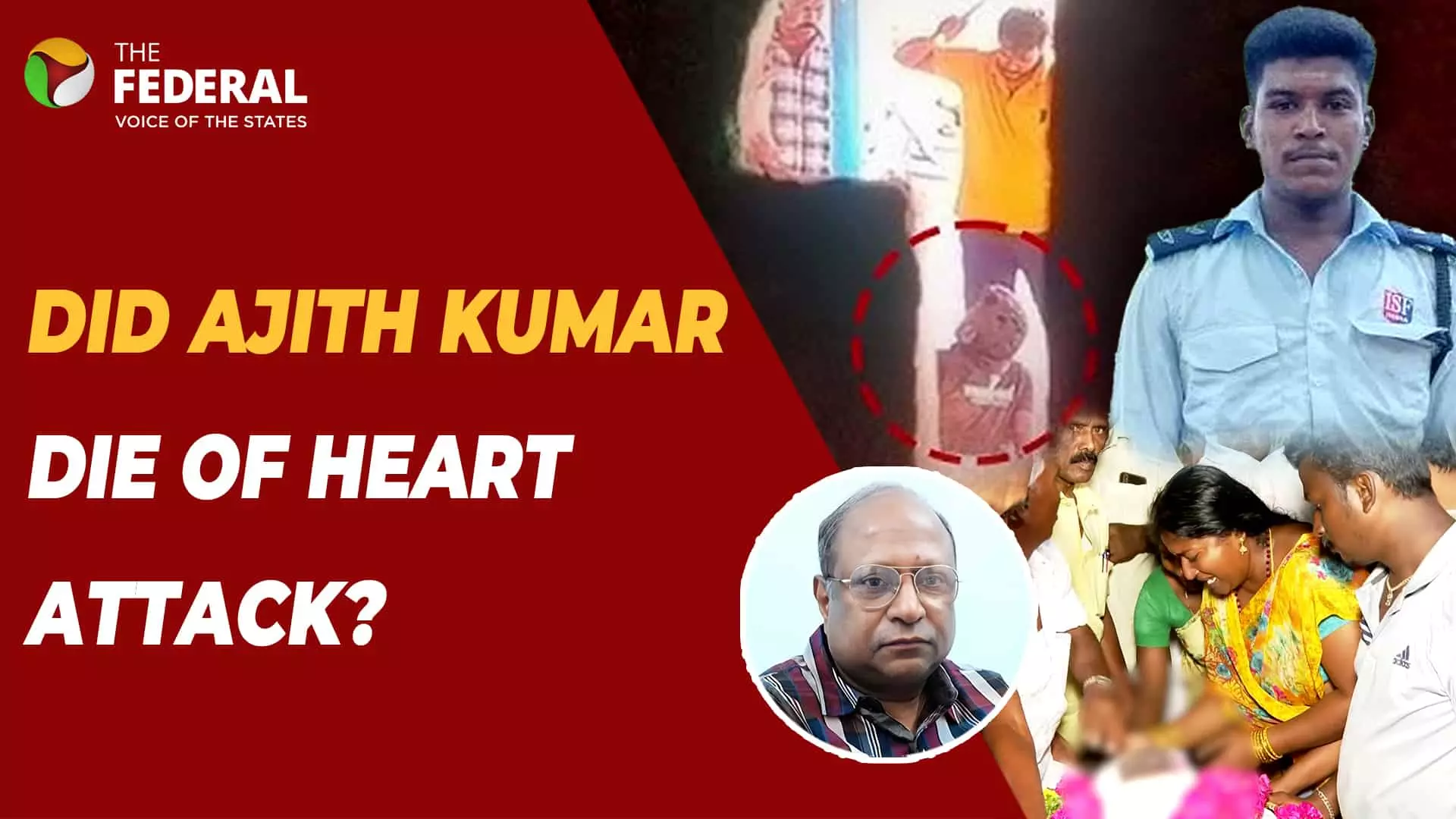
TN custodial death case: Forensic expert slams hasty cremation | Interview
Post-mortem reveals over 50 injuries, deep muscle contusions, and signs of prolonged torture. Expert questions the lack of senior oversight

In a chilling case that has drawn widespread public and judicial attention, forensic findings have revealed disturbing details about the brutal assault that led to the death of Ajith Kumar in police custody in Tamil Nadu's Sivaganga. In this interview, P Sampath Kumar, a senior toxicologist elaborates on the injuries, causes of death, and gaps in the investigation that could have implications for justice.
Why do you believe the severity and pattern of the 50-plus injuries, particularly the 45 deep contusions, point to a brutal assault rather than an incidental cause of death?
This clearly points to a brutal murder rather than an incidental incident. The severity of the injuries is well documented in the post-mortem report. First, visible bleeding from both ears suggests a severe injury inside the brain's skull cavity, likely a fracture of the middle cranial fossa. X-rays were taken, though the report is awaited. There was also bleeding from both nostrils and the mouth, further indicating a severe intracranial injury.
Also Read: TN custodial deaths: Human rights activist slams police-politician nexus
The contusions were from different directions, implying the involvement of more than one assailant. The depth of the injuries reached the bones, with entire muscle groups — gluteal region, thighs, abdomen — bruised thoroughly. The pattern resembles torture methods reportedly used by Japanese police on overstaying immigrants, intended to cause severe pain that prevents sitting or lying down. Here, even the abdomen and chest were contused, leaving the victim unable to lie face down. The extensive internal bleeding led to hypovolemic shock, evidenced by pale fingernails indicating anemia. Injuries were distributed head to foot, with about 44 contusions and 12 abrasions — more than enough to cause death.
Does this mean the injuries caused by the assault were the primary reason for Ajit Kumar’s death?
Yes, the primary cause was the assault itself. The pain and hypovolemic shock from multiple contusions were sufficient to cause death. Even the abrasions alone could be fatal, but combined with over 45 contusions, death was inevitable.
The post-mortem mentions petechial hemorrhages and atheromatous changes in the heart. Can you clarify these terms and their significance?
Trauma was the main cause of death, but these heart findings contributed. Petechial hemorrhages suggest small vessel ruptures. The report mentions a myocardial infarction — an area of heart muscle about 3 x 1.5 cm that had died and failed to function. These changes indicate chronic heart disease, likely from narrowed coronary arteries due to long-standing conditions like hypercholesterolemia or ischemia, possibly hereditary. The trauma exerted stress on an already failing heart, hastening death.
Also Read: Trauma severe enough to cause Ajith Kumar’s death: Forensic expert
Are there any characteristics of the contusions that help identify the weapon used?
Yes, the injuries suggest a blunt, round object like a pipe or rod about 1 cm in diameter. The post-mortem describes tramline contusions: pale in the centre where the force was applied, with raised edges. This pattern rules out a whip or flexible object. The weapon was likely a smooth rod or lathe-like implement.
The report indicates the body wasn’t preserved for further examination. How does this affect the investigation, and what’s the usual protocol?
The body was fresh at autopsy, but the rapid cremation that night raises suspicions. Normally, cremation happens the next morning after rituals. Quick disposal prevented further investigations like re-autopsy, which could have clarified doubts and satisfied both judicial and public scrutiny.
Could the brown fluid and partially digested rice in the stomach provide clues about the timeline of the assault?
Yes. The findings suggest Ajit Kumar hadn’t been fed for 24-48 hours. The small amount of rice points to a meal within three hours before death, but overall, he was severely underfed. The brown fluid, likely bile, indicates an empty stomach, supporting this conclusion.
Also Read: TN custodial death: Why theft complainant’s testimony is now under lens
How could pending x-ray, blood, and viscera analyses strengthen these findings?
X-rays could reveal fractures, especially in the skull, confirming violent trauma. Viscera analysis could detect substances like alcohol, poisons, or narcotics, whether ingested voluntarily or forcibly. These tests could provide further evidence of the torture endured.
What do the overlapping injury patterns in varying directions suggest about the nature and duration of the assault?
The colours of the contusions — ranging from reddish (a few hours old) to bluish-black (over 12-24 hours) and scabbed wounds (over 24 hours) — indicate continuous torture over 24-48 hours. Histopathology will help confirm this timeline.
Also Read: Sivaganga and more: Why do erring cops escape penalty for brutality?
In what way can your forensic analysis aid a thorough investigation and justice in this case, especially under public and judicial scrutiny?
In sensitive cases, a senior pathologist at professor level should conduct the post-mortem. Experience matters, particularly in interpreting complex findings like heart conditions. Preserving the body for potential re-autopsy would have helped address doubts and strengthened confidence in the judicial process. Photographs alone are insufficient; expert re-examination could ensure that justice is not only done but is seen to be done.
The content above has been generated using a fine-tuned AI model. To ensure accuracy, quality, and editorial integrity, we employ a Human-In-The-Loop (HITL) process. While AI assists in creating the initial draft, our experienced editorial team carefully reviews, edits, and refines the content before publication. At The Federal, we combine the efficiency of AI with the expertise of human editors to deliver reliable and insightful journalism.

